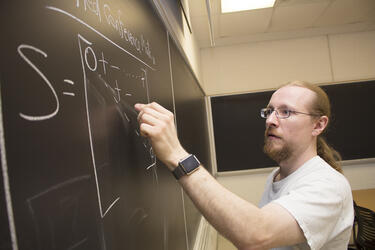IASM: Radar & Sequences
May 9, 2017

May 9, 2017
Jeff Hollon, who is working on his Ph.D. in Interdisciplinary Applied Science and Mathematics (IASM), has been working with Professor K.T. Arasu on research that applies sequences to things like radar systems.
Radar systems, error correcting codes, cell networks applications and data security all use sequences of numbers. Mathematicians call these strings of numbers sequences, engineers call them signals and computer scientists would call them codes.
Hollon earned a Bachelor of Science and a Master of Science in Mathematics at Wright State University. He completed his thesis on weighing
Finding the right college means finding the right fit. See all that the College of Science and Math has to offer by visiting campus.